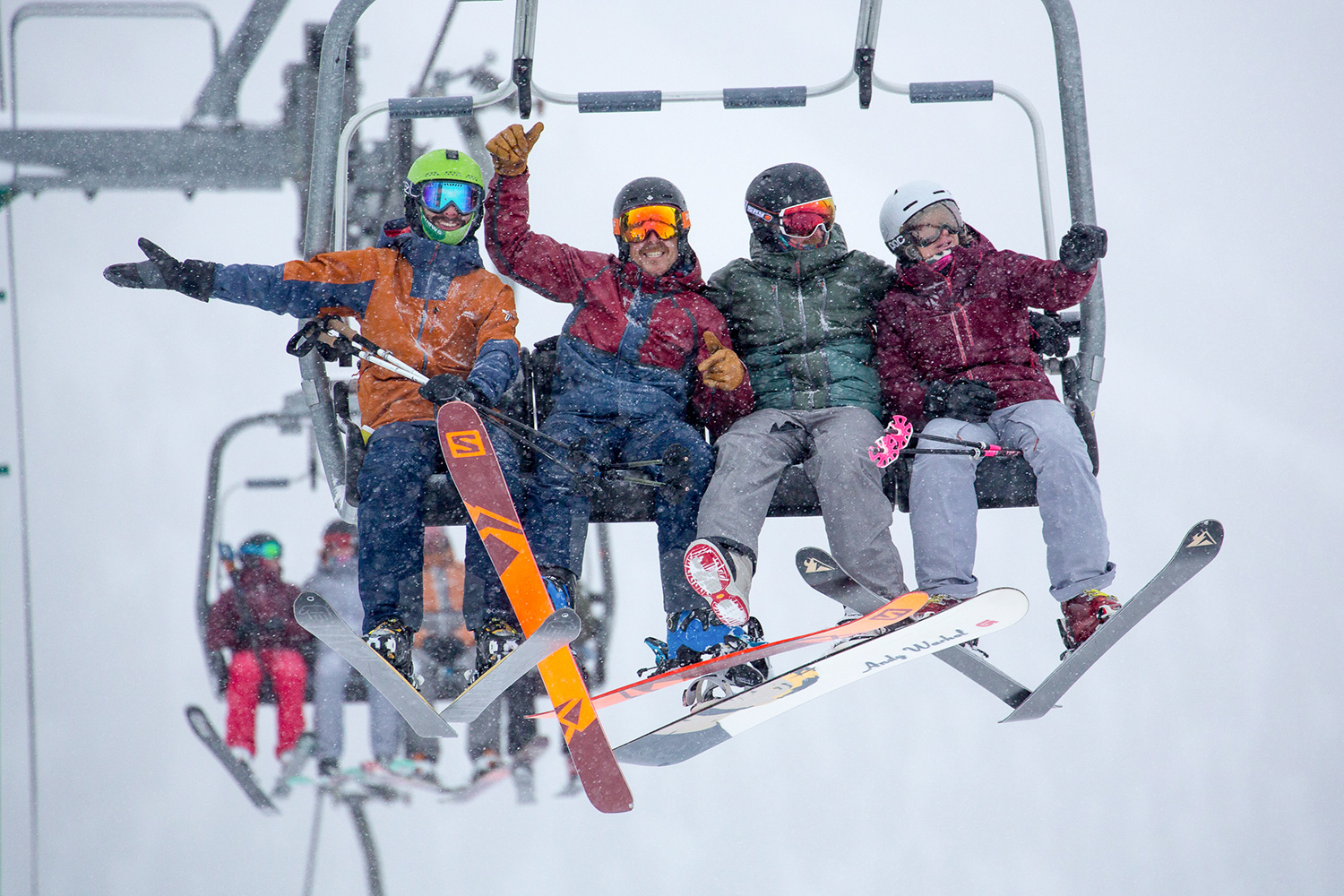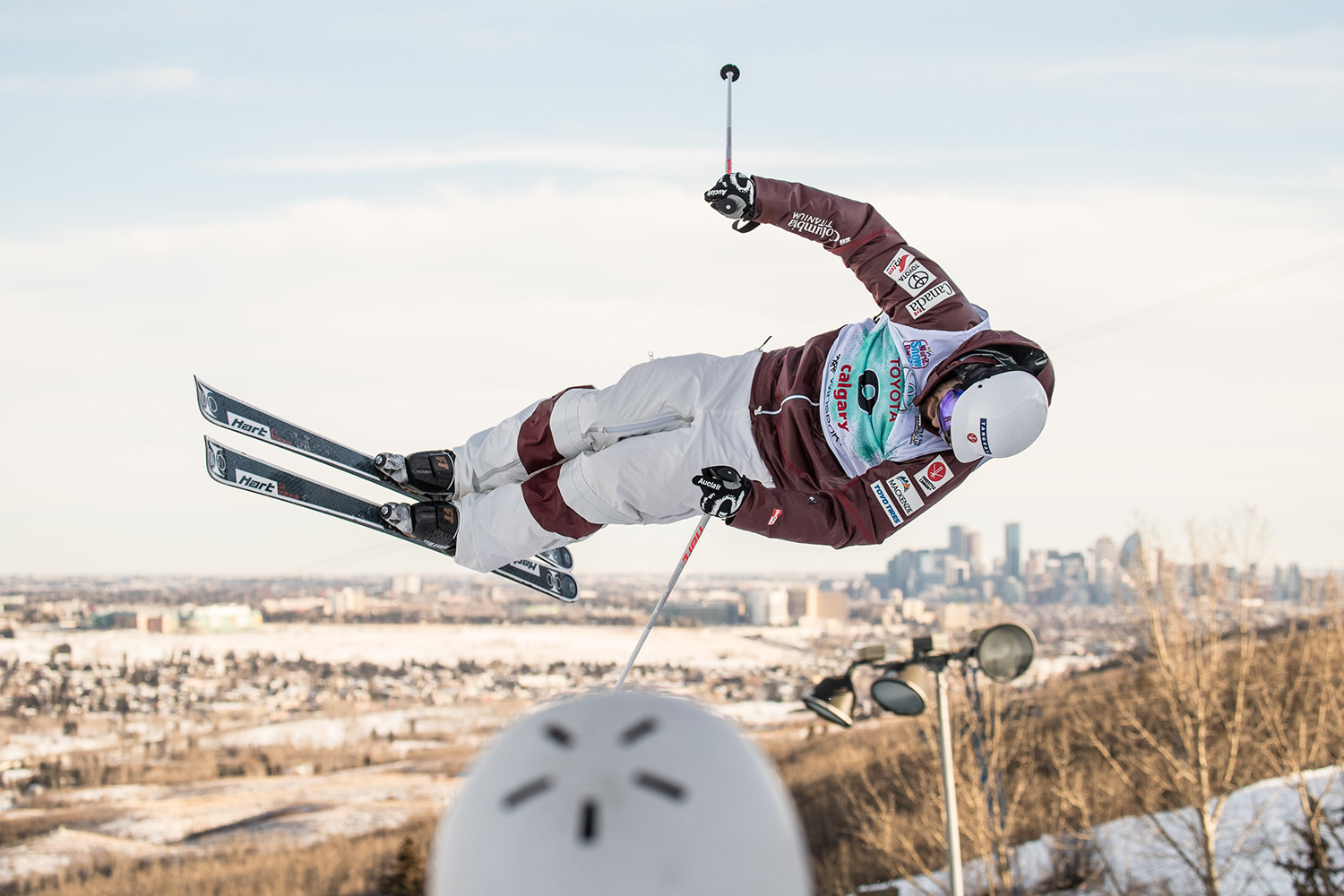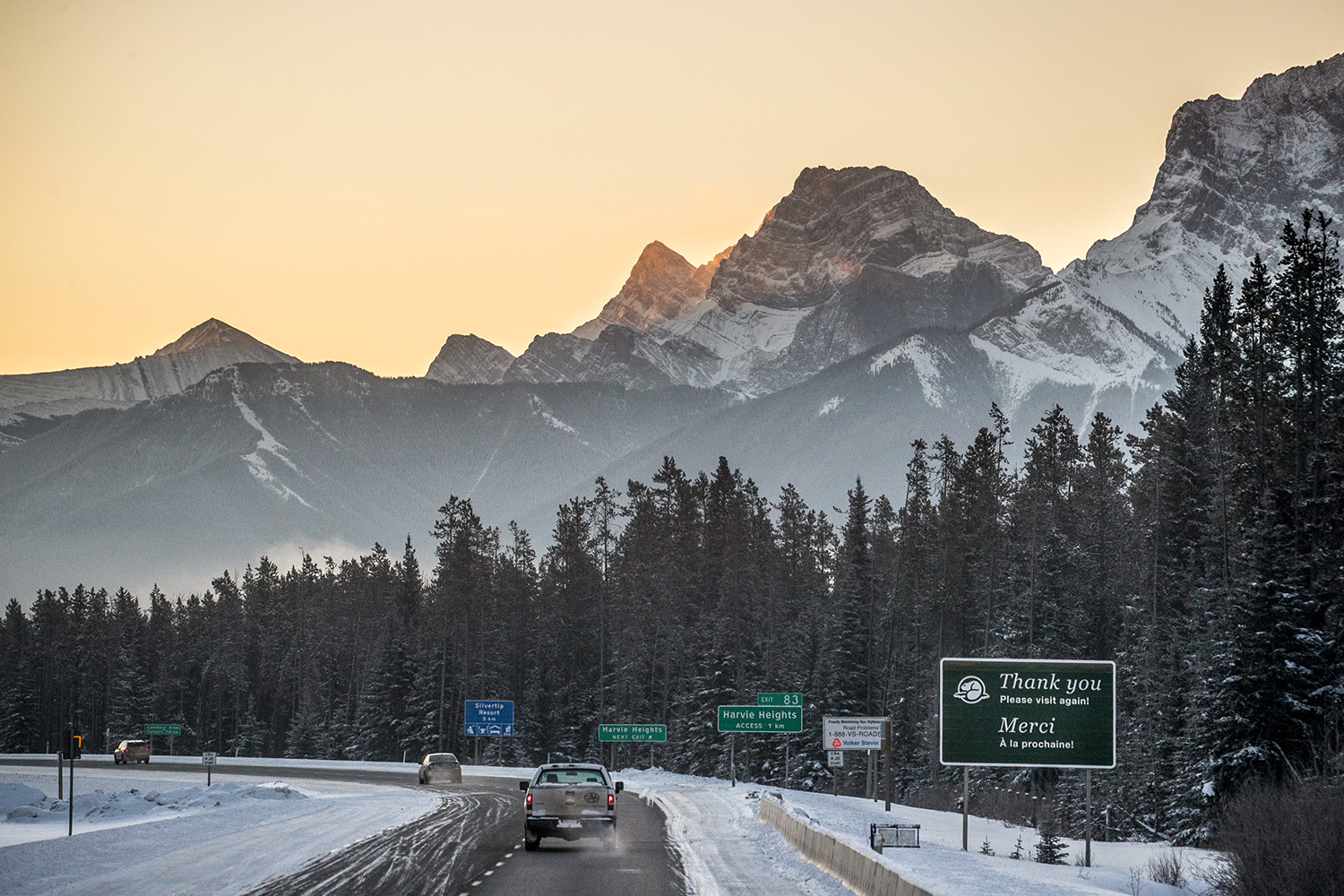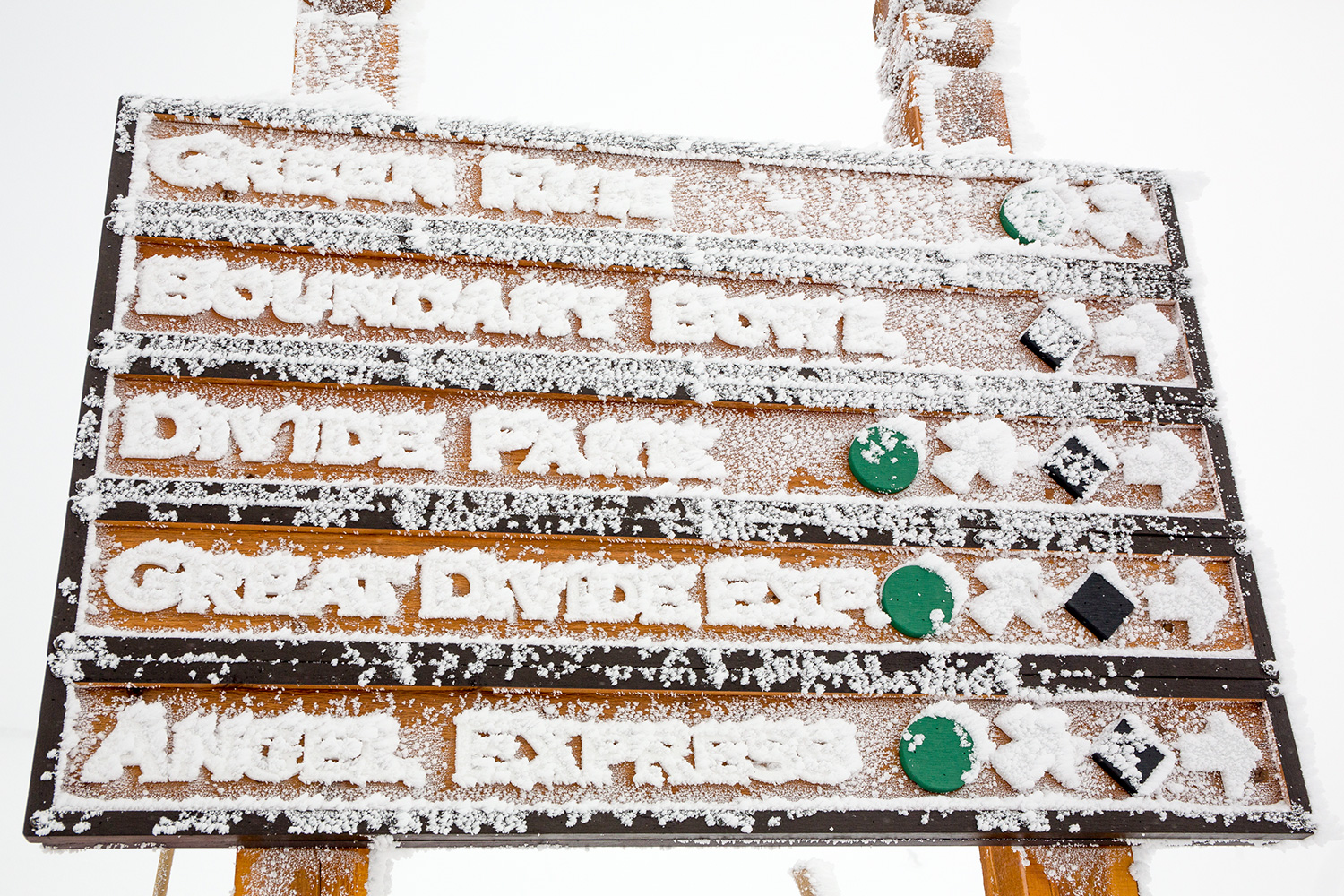Ask any native Canadian about the kind of weather to expect in Banff National Park in January, and the question alone may elicit a shiver. With an average daily temperature of roughly 17 degrees Fahrenheit, referring to the region as frigid may actually be an understatement. For Columbia Sportswear, however, 17 degrees was the perfect environment to test new apparel technology promising to change the way winter enthusiasts keep warm — and we decided to brave the bitter cold to see if the gear was up to the task.
17 degrees was the perfect environment to test new apparel.
Despite daily temperatures hovering in the single digits during the day and the negative single and teen digits at night, we went skiing in Canada’s backcountry, snowboarding around Banff’s Sunshine Village, and fat biking through downtown Calgary, all dressed head-to-toe in Columbia’s latest gear.
When we left our cozy fireside comfort of the lodge, we stepped into a cold which immediately froze the hairs in our nose. And thanks to the gear, that was the only part that ever felt cold.
A nameless innovation — for now
Though the tech is still under wraps until it launches in October, Columbia’s latest winter technology seems like a natural progression of the innovation the company’s been developing in Portland for the past several years.
Columbia developed its Omni-Heat Reflective technology in 2010 and the reflective dots, designed to bounce your body heat back to you, have become an impressive staple of its winter gear. Even Columbia’s OutDry Extreme tech defied industry norms by placing a waterproof layer on the outside of its jackets and pants, then covering the seams with an exterior patchwork of waterproof seam tape — giving the jackets a bit of a funky look. But they’ll keep you bone dry. Because of its recent track record, we had reason to have faith in all Columbia’s flashy, sometimes quirky tech.
It was so soft we forgot it was there altogether mere minutes after putting it on.
Then there’s the company’s Omni Freeze Zero, which uses sweat to cool instead of simply wicking it away. Rows of polymer rings absorb excess moisture (see: sweat) from your skin, and accelerate evaporative cooling. It works, too. We tested the tech in Mexico’s extreme humidity last summer and can speak to its efficiency.
Can this nameless new fabric defy cold weather the same way Columbia’s other innovations defy rain and heat? We set out for the frozen tundra of Alberta, Canada to find out.
Sweating in negative temperatures
At first glance, Columbia’s new gear looked grating but the company stressed that the new lining is supposed to feel incredibly soft next to the skin. Of course, the only way to find out was to try it on. So we suited up in everything on offer: Base layer tights, long-sleeve shirts, beanies, gloves, and full-on snow jackets.
Turns out our eyes deceive us. Not only wasn’t it scratchy, it was so soft we forgot it was there altogether mere minutes after putting it on. Once we started moving — which could very well produce a chafe and was something one person on the trip reported — it was like we were wearing any normal base layer, with one exception: The heat.
The outfit actually had us breaking a sweat.
Despite temperatures that routinely tickled zero and below, the outfit worked so well, it actually had us breaking a sweat. Typically, a lift ride at the end of a run can be a chilling journey, but with Columbia’s tech wrapped around us head-to-toe, the cool air was a welcome respite.
Over the course of four days traversing Banff National Park’s three ski resorts — Mount Norquay, Sunshine Village, and Lake Louise — we put Columbia’s gear to the test. As we lapped the resorts, it became clearer our Columbia getup was fit for the assignment. Be it a five-minute lift ride up the hill or a blood-pumping run down one of Lake Louise’s black diamond chutes, the gear excelled at every turn. As the weather turned bone-chilling and the terrain more advanced, we needed our equipment to keep up, and it did just that.
Our lone critique would be that the sleeves on one of our jackets weren’t quite big enough to easily slot the bottom of our gloves inside. It took a little extra effort than normal, but wasn’t a complete dealbreaker. To Columbia’s credit, employees documented the groans and gripes stemming from our first look, intent on taking the reports to its designers to make tweaks before October’s official launch.
And now we wait
While the conditions we experienced in Banff do fall a bit on the extreme side, there’s no question that this gear is ready for just about anything winter can throw at you. Columbia envisions skiiers and snowboarders decked head-to-toe in the tech — and why not? — but you don’t need to shell out money for an entirely new closet of snow apparel. Instead, simply fill in the existing gaps or upgrade your current go-to outfit.
If you just get one piece, get the base layer. It will add outstanding warmth to the rest of your winter getup for only $90. You can also pick up gloves for $80, a beanie for $40, or if you really are headed for somewhere subzero, step all the way up to $250 pants and a $350 jacket.
This is impressive tech. It kept us comfortable and abundantly warm in below-zero temperatures without sacrificing performance. When it comes to sifting through the sea of available winter outerwear, you don’t often check all three of those boxes without spending a fortune. But Columbia found a way. If only we didn’t have to wait until next October for it to officially release.













